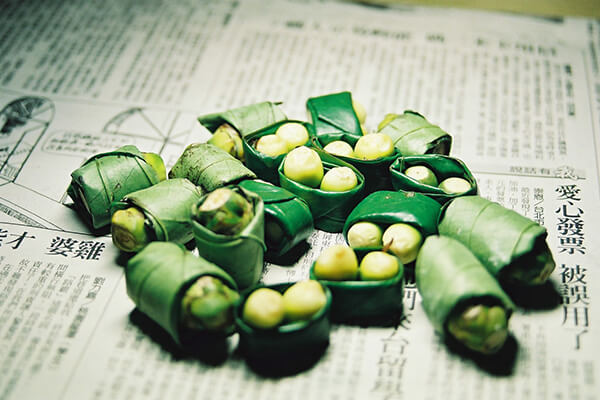 Photo by: © National Cancer Institute
Photo by: © National Cancer InstituteBetel quid usually includes a combination of the Areca nut (from the Areca catechu tree) and slaked lime (calcium hydroxide obtained by heating or harvesting sea shells or quarrying limestone) wrapped in a betel leaf. In some countries, when tobacco is added, the combination is called gutka; without tobacco, it’s called pan masala. Spices are also added in some cases for flavoring. It is the fourth most commonly self-administered psychoactive substance in the world after caffeine, alcohol, and tobacco and the most commonly used in Asia. It is estimated that more than 600 million people use betel quid worldwide.
The areca nut contains arecoline, muscarine, and pilocarpine, which can have stimulant and relaxation effects. The International Agency for Cancer Research has classified betel quid as being cancerous with or without tobacco. Other health effects include risk of having a low-birth weight baby if consumed while pregnant.
Although betel quid use disorder (BUD) is not formally identified as an addictive behavior, studies are looking at chronic use leading to myriad of health problems including oral health cancers. Read more in the Journal of the American Medical Association.
